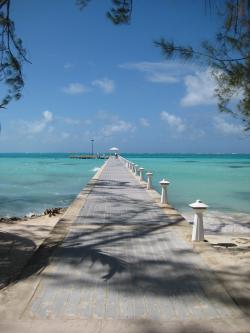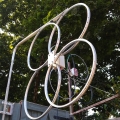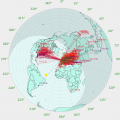jks
About
- Username
- jks
- Joined
- Visits
- 36,739
- Last Active
- Roles
- Member, Administrator, Moderator
- Points
- 670
Reactions
-
Is it possible to pass keyboard shortcuts via a URL? [fixed in v1.274]
From the v1.274 CHANGE_LOG file:v1.274 March 17, 2019 Added URL parameter "keys=" to apply specified keyboard shortcut keys upon connection. Example: "keys=xyyys" would cause the control panel to be hidden ('x' key), top and label bars to be hidden ('yyy' keys) and spectrum display to appear ('s' key). The shift key can obviously be used (e.g. capital 'S' for waterfall auto-scale) but the control and option keys cannot. But this should not be a significant limitation as it only effects parameters which can be set in other ways (see below). The keys used to enter values and options into the frequency box cannot be entered using this new parameter. Use the existing "f=" URL parameter instead. Remember that you can directly set the zoom value using the f= parameter since the other components are optional e.g. f=usbz7 f=/750cwz12 f=z4 Added URL parameter "wfm=min{,max}" to directly set waterfall colormap control values. Example: wfm=-90 (WF max value is unchanged) wfm=-120,-60 (changes both values) -
Is it possible to pass keyboard shortcuts via a URL? [fixed in v1.274]
From the v1.274 CHANGE_LOG file:v1.274 March 17, 2019 Added URL parameter "keys=" to apply specified keyboard shortcut keys upon connection. Example: "keys=xyyys" would cause the control panel to be hidden ('x' key), top and label bars to be hidden ('yyy' keys) and spectrum display to appear ('s' key). The shift key can obviously be used (e.g. capital 'S' for waterfall auto-scale) but the control and option keys cannot. But this should not be a significant limitation as it only effects parameters which can be set in other ways (see below). The keys used to enter values and options into the frequency box cannot be entered using this new parameter. Use the existing "f=" URL parameter instead. Remember that you can directly set the zoom value using the f= parameter since the other components are optional e.g. f=usbz7 f=/750cwz12 f=z4 Added URL parameter "wfm=min{,max}" to directly set waterfall colormap control values. Example: wfm=-90 (WF max value is unchanged) wfm=-120,-60 (changes both values) -
Specify which receiver number to use? [fixed in v1.272]
Fixed in v1.272
From the CHANGE_LOG file:
More information about URL parameters: http://kiwisdr.com/quickstart/index.html#id-user-tunev1.272 March 14, 2019 Added URL parameters "p", "prot" and "protected" (they are all equivalent) to force a password protected channel to be used when connecting. This is for the case of a Kiwi with a mix of password protected channels and publicly available channels without a password. And you want to connect without decreasing the pool of public channels. Note that if you are connecting from the same local network as the Kiwi, and admin auto-login has been setup, this is counted as a connection from the password protected pool and you do not need to specify this parameter. So you would not need to specify the "prot" parameter for a Kiwi on your local network but you would need it for a Kiwi installed at a remote location. Or it would be needed by a group of users to access the private channel(s) without impacting the availability of the public pool.
kiwiclient.py needs to be modified to take advantage of this change. -
KiwiSDR production status and availability
Seeed finally got back to me about the Kiwi production situation. They said they were not able to find ADC chips. I didn't understand this at all as a single click on a bookmark with my mouse showed hundreds of chips in stock at the usual suspects. The only thing I can think of is that Seeed's purchasing department didn't quite understand that Linear Technology had been acquired by Analog Devices back in 2017. And rebranding of the parts may have occurred causing them to think they weren't the same as those called out by the Kiwi Bill-of-Materials. But that's just a guess. Trying to get detailed information out of Seeed is like pulling teeth and seems to be one of the pitfalls of doing business with China.
Anyway, they are supposed to receive 350 parts tomorrow and hopefully production will resume shortly thereafter.
I must mention however that I am extremely grateful for Seeed's involvement with the Kiwi. Their production quality is top notch. And their efforts to develop the distributor network has helped the project tremendously. -
Major interference. Not local. Any ideas?
There seems to be a couple of issues here. Take a look at the 0 - 250 kHz band segment below. There is a terrible -60 dBm (S9+10) switcher starting at about 37 or 38 kHz. And it is very wide at the fundamental which will make the harmonics even wider. There is also this funny frequency-switching (square wave looking) signal at 67 kHz.
Now look at this 17 - 19 MHz segment. Harmonics of the square wave looking thing are clearly there as well as what sound like harmonics of the 38 kHz switcher (particularly above 18 MHz). Now you might ask why are there no harmonics of these things in the 1 - 15 MHz range (or why they are so much more heavily attenuated). But I have seen this behavior before where there seems to be selective attenuation of the harmonics. It is extremely interesting that two sources of LF RFI seem to have the same attenuation pattern.
Does it happen at all hours of the day? I'm wondering if a street light (electronic or otherwise) has gone bad. Does the signal strength change (or even null) if you rotate the loop? -
KiwiSDR production status and availability
Seeed finally got back to me about the Kiwi production situation. They said they were not able to find ADC chips. I didn't understand this at all as a single click on a bookmark with my mouse showed hundreds of chips in stock at the usual suspects. The only thing I can think of is that Seeed's purchasing department didn't quite understand that Linear Technology had been acquired by Analog Devices back in 2017. And rebranding of the parts may have occurred causing them to think they weren't the same as those called out by the Kiwi Bill-of-Materials. But that's just a guess. Trying to get detailed information out of Seeed is like pulling teeth and seems to be one of the pitfalls of doing business with China.
Anyway, they are supposed to receive 350 parts tomorrow and hopefully production will resume shortly thereafter.
I must mention however that I am extremely grateful for Seeed's involvement with the Kiwi. Their production quality is top notch. And their efforts to develop the distributor network has helped the project tremendously. -
Full Reset
I can reproduce this error by putting invalid input in some of the configuration fields, e.g. making the "photo maximum height" field blank rather than a number on the admin webpage tab (it's set to 350 by default). So look at all the field values carefully.
You can also cause the default kiwi.config file to be reinstalled by doing:cdp mst // stops server cdk mv kiwi.config kiwi.config.save cdp mi // make install ku // restart -
1476 kHz
-
v1.269: DX label filtering
Type the '@' keyboard shortcut, or click the new entry in the right-click menu to bring up a DX label filter panel. This is an experiment, not perfect and subject to change.
"Ident" means the text shown in the label. "Notes" is the text in the popup when you mouse-over the label. When you enter text in the Ident or Notes field, followed by the Enter key, the labels shown will be filtered. The label Ident and Note must contain the text in the field (not exactly match it). If both Ident and Notes are specified then they both must be true (i.e. "and" not "or"). There is a checkbox to enable upper/lowercase sensitivity.
When filtered the background where the labels appear changes from white to pink to remind you that filtering is occurring. Filtering persists after the filter panel is closed (with the Escape key or clicking the circled-X) until the text fields are set empty.
Note that even when filtered label anti-cluttering is still in effect. Anti-cluttering prevents showing too many labels that would appear too close to each other on the display. So even when filtered you may not be seeing all labels that match unless you zoom in to allow the labels to become uncluttered. You can also avoid this problem by choosing filter text that is more specific (if possible).
For Kiwi admins: Remember that you can edit the label characteristics by holding the shift-clicking on a label. And alt/option-shift-click on a label toggles the Type between "active" and "watch-list". Obviously you can tailor the Ident and Notes contents of your labels to make filtering easier, e.g. adding "DRM" to existing labels that are known to have DRM transmissions so you can simply type "drm" in the Ident filter field.
----
Advanced features
The "grep" checkbox allows the text fields to become "generalized regular expressions" for doing pattern matching. If you don't know what this is see here: https://en.wikipedia.org/wiki/Regular_expression So an Ident of "1.*2" would a label matching "1" followed by zero or more characters (the grep meaning of ".*"), then "2". If you enter an illegal regular expression the field will turn red until you fix it. -
v1.269: DX label filtering
Type the '@' keyboard shortcut, or click the new entry in the right-click menu to bring up a DX label filter panel. This is an experiment, not perfect and subject to change.
"Ident" means the text shown in the label. "Notes" is the text in the popup when you mouse-over the label. When you enter text in the Ident or Notes field, followed by the Enter key, the labels shown will be filtered. The label Ident and Note must contain the text in the field (not exactly match it). If both Ident and Notes are specified then they both must be true (i.e. "and" not "or"). There is a checkbox to enable upper/lowercase sensitivity.
When filtered the background where the labels appear changes from white to pink to remind you that filtering is occurring. Filtering persists after the filter panel is closed (with the Escape key or clicking the circled-X) until the text fields are set empty.
Note that even when filtered label anti-cluttering is still in effect. Anti-cluttering prevents showing too many labels that would appear too close to each other on the display. So even when filtered you may not be seeing all labels that match unless you zoom in to allow the labels to become uncluttered. You can also avoid this problem by choosing filter text that is more specific (if possible).
For Kiwi admins: Remember that you can edit the label characteristics by holding the shift-clicking on a label. And alt/option-shift-click on a label toggles the Type between "active" and "watch-list". Obviously you can tailor the Ident and Notes contents of your labels to make filtering easier, e.g. adding "DRM" to existing labels that are known to have DRM transmissions so you can simply type "drm" in the Ident filter field.
----
Advanced features
The "grep" checkbox allows the text fields to become "generalized regular expressions" for doing pattern matching. If you don't know what this is see here: https://en.wikipedia.org/wiki/Regular_expression So an Ident of "1.*2" would a label matching "1" followed by zero or more characters (the grep meaning of ".*"), then "2". If you enter an illegal regular expression the field will turn red until you fix it.







